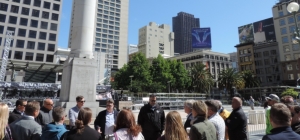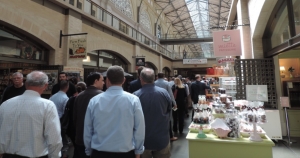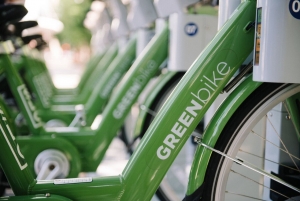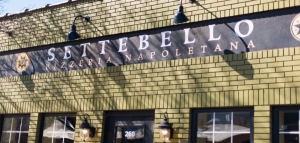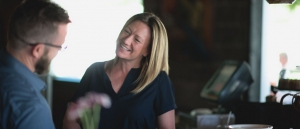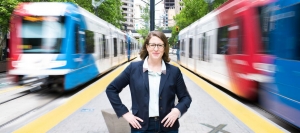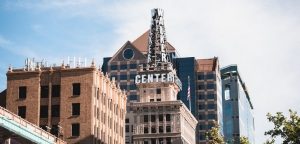DTA Staff
Meet Three People Giving a Hand Up Instead of a Handout
In his book Triumph of the City, Harvard Professor Edward Glaeser says “cities don't make people poor; they attract poor people. The flow of less advantaged people into cities demonstrates urban strength, not weakness.”
Downtown is Utah’s center for culture, commerce and entertainment. It is our state’s capital and historic center for finance, law, media and creative enterprise. But at the core of this urban center are the people who make it dynamic and diverse. Downtown plays a role in the lives of many people, including homeless individuals and families, as well as those fighting addiction.
Below are three individuals lending their talents and experience caring and advocating for the community who rely on our downtown for recovery and services.
Celeste Eggert: Advocate & Guardian
When most of us consider what we do and where we go to work, nouns such as “job” or “career” are used. Celeste Eggert instead describes her path as “service” and “calling” in defining her 17 years at the Road Home. Celeste began as a case manager at the agency and has served as Director of Development for the past eleven years.
“It is so difficult to pick a single moment that epitomizes why I love my job,” Celeste states. “I think everytime I see a family or an individual move into housing it reaffirms to me the work we are doing is making a difference. I see people every day that others may think are beyond hope and can't possibly find a way out of homelessness and yet they do. Working at The Road Home reaffirms to me every day that every human being is worthy of a second chance.”
The Road Home is many things to many people, and Celeste describes their role as a stepping stone and a resource for families and individuals who are struggling to find a way out of homelessness. The cliche in marketing materials is true: “we are a hand up, not a hand out.” Clients do the work as they move out of homelessness and back into our community. In fact, 63 percent of the people who come through The Road Home's doors stay for 6 weeks or less.
Celeste sees her role as two-fold: first as an advocate for people experiencing homelessness. “So many people have preconceived ideas of what homelessness is and who the homeless are. Part of my role is an opportunity to educate the public about the work of our agency and this extremely complex issue.” The humanity of The Road Home can be found in looking at the words Celeste uses to describe who they are and what the do. For example, using the word “client” offers a far different image than other words may conjure when thinking of this part of our community’s population. Secondly, as a guardian of our agency's mission, "To help people out of homelessness and back into our community." The Road Home exists because of the generosity of our community. They entrust the staff to serve those experiencing homelessness in the best, most efficient manner possible. “It is a great responsibility and one that we take very seriously.“
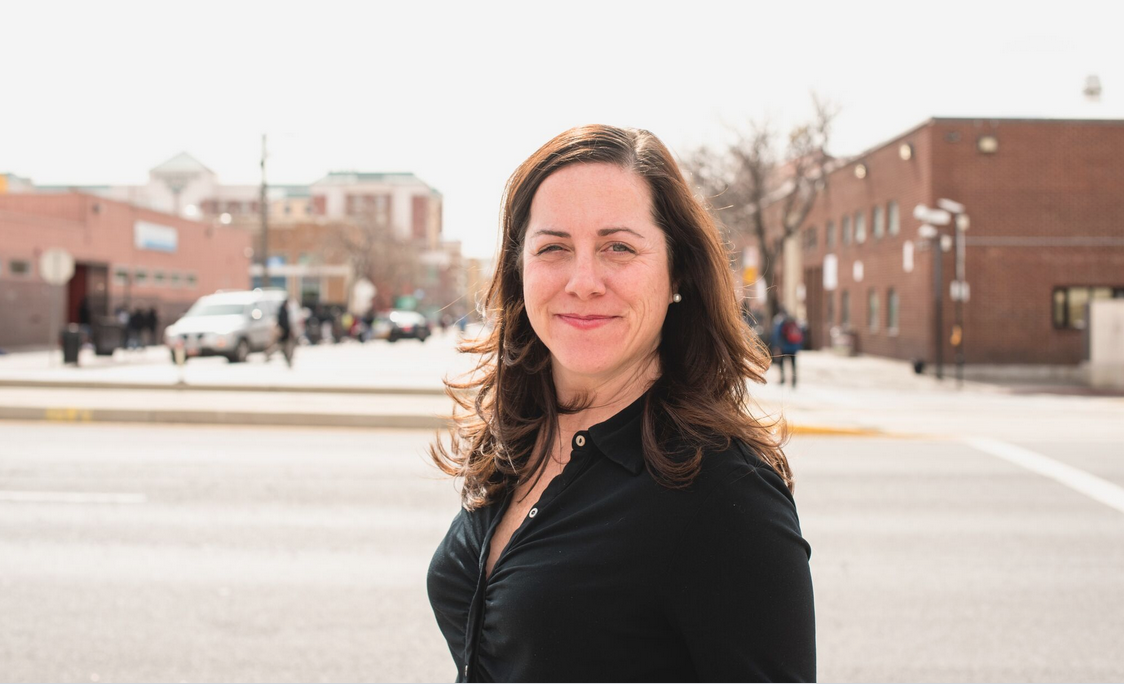
Randall Carlisle: One Day at a Time, One Person at a Time.
You may recognize Randall as the face and voice of the evening news, having worked as a reporter and anchor in local television for nearly three decades. Or perhaps you recognize his smile and helpful personality behind the customer service desk at Harmons. A downtown resident for as long as he’s been on the airwaves, what you might not know about Randall is his personal journey as a recovering alcoholic.
Currently sober for three-and-a-half years, Randall generously gives his time and shares his experience towards helping others battling addiction and seeking recovery. The Rio Grande neighborhood is home to numerous 12-step programs, including an AA meeting Randall volunteers to lead bi-weekly.
One of Randall’s motivating factors to become a part of the solution was to begin instilling hope in others. Believing in a “one-day-at-a-time” approach in staying sober,
He also points to his role as a journalist, and being assigned stories about the HOST program as a catalyst to get involved. “I saw what they were doing with this multi-faceted program, and they offered me the space to lead these meetings.” That was six months ago.
Since then, HOST, a collaborative approach between city leaders, SLC Police, the Downtown Alliance and other service providers has helped many people. “The best way we can deal with people is one-on-one, and that includes the HOST program. Whether you help someone out with substance abuse, lack of housing or lack of a job, then you’ve really made a difference in life.” HOST is an acronym for Homeless Outreach Service Team, defined as a proactive and collaborative effort to move the community beyond enforcement of order maintenance issues – public intoxication, disorderly conduct, etc. – to a partnership with homeless service providers that connects homeless individuals with social services and resources.
A firm believer that recovery programs can help, Randall is also quick to point out that “substance abuse and mental illness are top-tier issues” for the individuals who frequent the neighborhood. “Throughout these past six months, I’ve seen people stay clean and sober, find jobs and housing. Unfortunately, that’s in the minority and there are more failures than success stories.”
To understand how to help those suffering from addiction starts with understanding the environment these individuals face each day. The current cluster of services downtown, while convenient from a geographic perspective, also breeds an inhospitable climate for those seeking recovery, as well as for children and families.
When looking towards the future, Randall is incredibly hopeful efforts by Mayor McAdams and Mayor Biskupski to collaborate with state and private funding will change the environment in the Rio Grande neighborhood. Spreading some of the services, even a few blocks will pay great dividends to individuals in the area, as well as surrounding businesses.
Like most public and private leaders, Randal expects downtown to play a continuing role is aiding recovery and minimizing homelessness. “Downtown embraces everyone. There is a friendly climate, regardless of race, gender, sexual identity or walk in life. The homeless population is integral to every downtown around the county, and in my opinion it enhances the experience of living downtown. You can see the diversity. It’s healthy for society.”
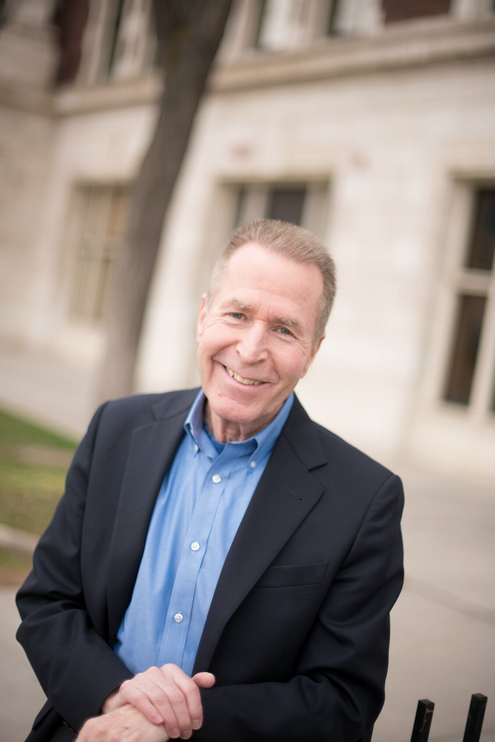
Mayor Ben McAdams: Collective Impact
Mayor McAdams is taking serious aim at minimizing homelessness by getting to the root causes, as well as changing the way services are administered in Salt Lake County. The words “Collective Impact” have been used to describe the process and strategy. The nexus of this study and plan began several years ago as problems became more serious in the downtown area, with respect to increasing numbers of homeless individuals and the activities of a criminal element that surrounded them, Salt Lake CIty and Salt Lake County created a two-pronged approach to tackle the issues. Mayor Becker, with the help of volunteer community leaders Palmer DePaulis and Gail Miller, co-chaired a commission to study the current configuration of homeless facilities and emergency shelter. And Mayor Jackie Biskupski kept the momentum moving forward after the 2015 mayoral campaign, identifying homelessness as one of her key priorities. Meanwhile, Mayor Ben McAdams co-chaired a committee with all the homeless service providers to map out the system of homeless services. After completing a year of meetings and public outreach, both groups reached a consensus to adopt the collective impact outcomes and agreed on the common agenda to minimize homelessness.
After bringing key stakeholders together from both the homeless facilities operations and service provider worlds, Mayor McAdams asked the group to dive deeply into the current homelessness system. He calls it “mapping the genome” of homelessness services, and tallied $52 million annually in government and private funds for homeless specific services. The true figure is actually higher, as this did not account for associated costs such as jail, hospital and emergency first responder expenses. “Homelessness data collected by the state showed that people are cycling through multiple, uncoordinated systems,” said McAdams. “Everyone was trying hard and everyone was doing good work. But too often the impact was isolated and temporary. By bringing everyone together and agreeing to work on a common agenda, with specific outcomes and measurable indicators, we can harness that dedicated effort around a shared solution – minimizing homelessness.”
The Collective Impact Steering Committee identified system-wide challenges. It defined 14 specific outcomes for individuals and families experiencing homelessness, preventing homelessness and housing and service systems. The outcomes are determined by a set of clear, defined and measurable indicators. Using data collected by the State of Utah over the past decade, they are able to benchmark where we are now and track the results of our actions and expenditures that are designed to help the different and distinct groups of homeless individuals, such as families with children, veterans, and the working homeless.
Cities across the nation including Salt Lake City, are struggling to address the issue of homelessness. Each of the three leaders we spoke to offer their opinions on where to be mindful and direct our attention and efforts. Randall is quick to point to a “necessary increase in inpatient treatment facilities,” to aim at the root causes of addiction. Mayor McAdams reminds us that “the notion of a ‘one-size-fits-all’ approach for emergency shelter and programs ignores the complicated and diverse causes of and risks for homelessness.” Celeste sees housing as the answer: “Downtown Salt Lake City has an opportunity to attend to this issue through the creation of more affordable housing. By creating more deeply affordable housing opportunities in Salt Lake City and across our state, we can help to reduce the need for people to turn to shelters in the first place.“
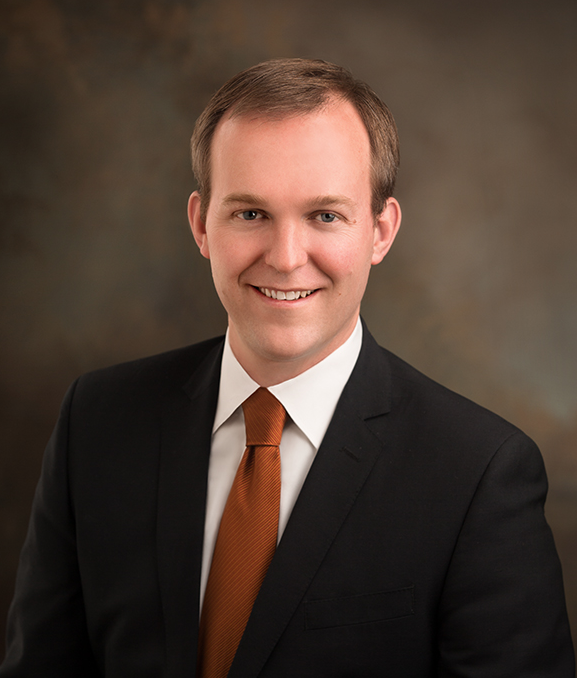
New Face in Town: Progrexion
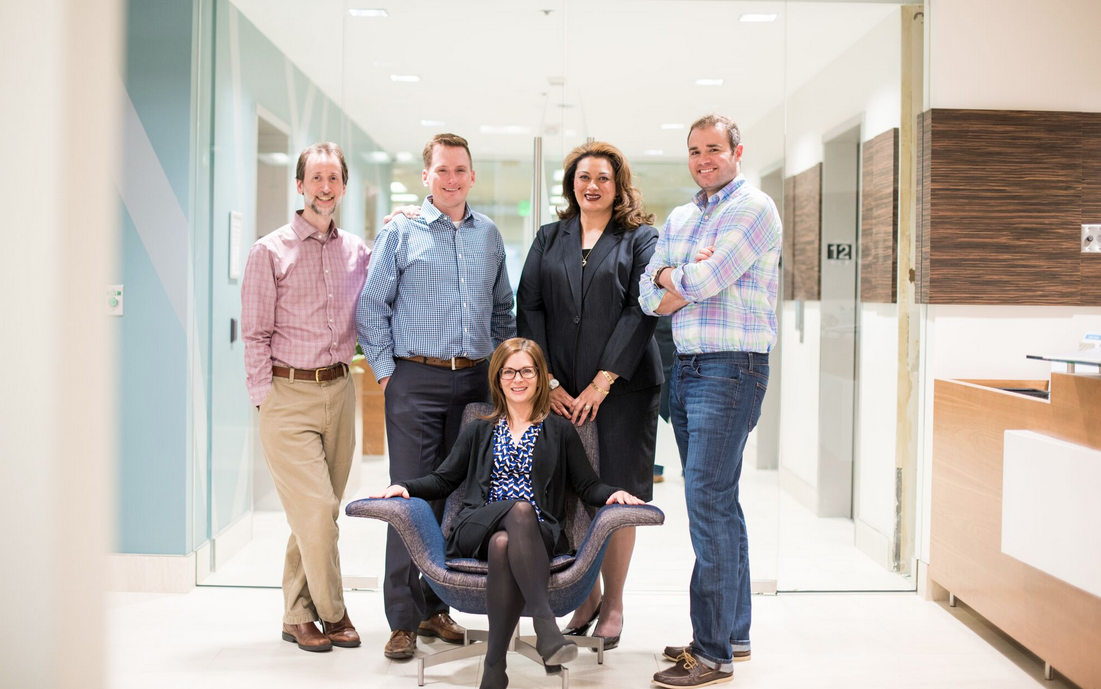
Who is Progrexion?
Progrexion is the leading provider of credit report repair services in the United States. Progrexion’s technology and services help consumers access and understand information contained in their credit reports, verify whether that information is fair, accurate and substantiated, and correct inaccuracies with individual creditors, other data furnishers and the national credit bureaus. Progrexion technology and services are used by CreditRepair.com, its wholly-owned subsidiary and Lexington Law, an independently-operated law firm. Progrexion has consistently been named by Utah Business Magazine as one of Utah’s top 50 fastest growing companies.
There is an entire page on your site dedicated to culture: why is that important?
A strong corporate culture is the driving force behind associate engagement and retention. It is the right business strategy and more importantly it is the right thing to provide for our associates. We are passionate in the services that we provide our clients and we seek to have a long-term relationship in providing products and services for them. We seek that same long-term relationship with our employees through our strong culture, good compensation and benefits, recognition, personal development, and career advancement.
Why did you choose to locate an office downtown SLC?
Last year we moved our corporate offices from the founder’s North Salt Lake location to an excellent location on Second South. We love being based in Utah for the quality of employees that we attract and the quality of life they can enjoy here. Our other offices in Utah are in North Salt Lake, Decker Lake and Provo.
How has downtown played a role in your brand's success?
As a fast-growing company, it was important for us to have a headquarters building that represented the professionalism and success of the company. It certainly adds to the perceived prestige of a company for candidates and visitors to come to a nice downtown location. The energy of being in the city adds to the culture of the office and the quality of restaurants and other downtown amenities add to the overall experience for our employees.
Urban Exploration: San Francisco - Day 2
The Downtown Alliance can learn from the successes of other neighborhoods and downtowns throughout the country. The Urban Exploration program brings public and private sector leaders together to learn about the best practices of other cities. This is the third in a series of annual trips sponsored by the Downtown Alliance to build relationships and learn from the success of other communities.
The Urban Exploration program is a working trip focused on building relationships and inspiring innovation in downtown Salt Lake City. We are currently working to strategically select projects in the bay area that correlate to emerging initiatives and issues in downtown Salt Lake City. This year's urban exploration participants will learn about downtown San Francisco's startup scene and culture of entrepreneurship, food based economy, redevelopment projects and arts and cultural initiatives.
This is the third in a series of annual trips sponsored by the Downtown Alliance to build relationships and learn from the success of other communities: we visited New York in 2014 and Chicago in 2015.
Homelessness and Tech - Innovative Service Delivery for San Francisco's Needy.
It's no secret that San Francisco has a homeless crisis. The reality of the homeless crisis lies at the street level - and for many San Francisco residents and tourists scenes of human misery can be routine. There are several reasons for this - a lack of affordable housing, social service providers and a long history of inadequate funding that began in the early 1980's when the Reagan Administration drastically cut section 8 housing benefits. Rather than throw up their hands and ignore the problem, many San Franciscans have dedicated their lives to helping these vulnerable populations and are working from the ground up to foster change. We had the opportunity to learn from two groups at the forefront of the homeless solution. Amy Golsong (Deputy Director of Resources, Project Homeless Connect) and Rose Broome (CEO and Founder, HandUp) joined us for a breakfast panel to discuss how the two organizations are leveraging technology and the power of human relationships to fight homelessness and urban poverty in San Francisco.
Private Management of Public Spaces - Managing Dynamic Arts, Retail and Pedestrian Corridors.
Our group explored the historic Union Square later on in the day to see how private management can effectively run and implement programs in public spaces. We were joined by Deputy Director Ben Horne and Services Manager Randall Scott for a walking tour on the "nuts and bolts" of public space management in Union Square. Highlights of this tour included activation of the plaza through concerts and lunchtime events to alleyway activation and a new subway line. For more information on Union Square please visit www.visitunionsquaresf.com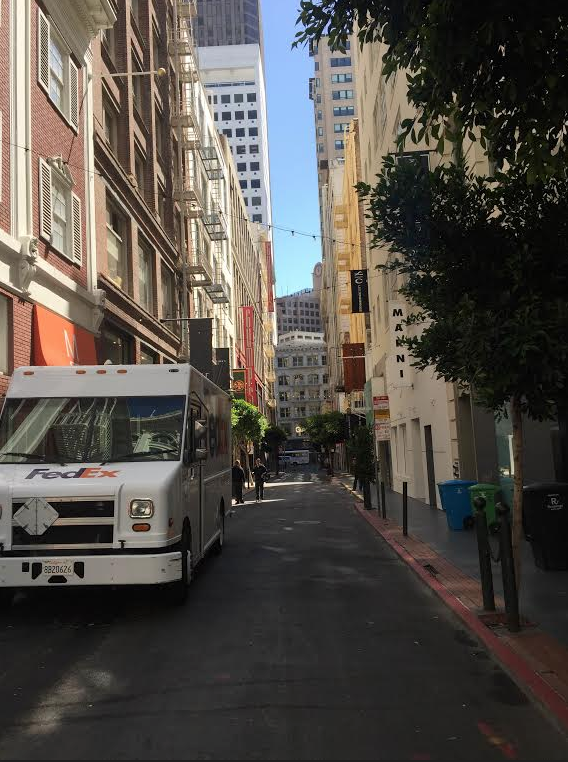
Private Management of Public Spaces - Safety and Security Lunch Panel.
After the tour we were joined by the Union Square Business BID Executive Director Karen Flood and San Francisco Police Department Captain David Lazar for a lunch panel on the Union Square BID's efforts to create a safe and secure environment for the for the thousands of visitors that enter the Union Square neighborhood every week. Captain Lazar emphasized the importance of their new security camera system in the areas success.
San Francisco Museum of Modern Art.
We checked out the newly renovated San Francisco Museum of Modern Art. The SFMOMA building closed temporarily in June 2013 for a two-and-a-half year expansion project but reopened on May 14th with brand new exhibits showcasing the finest of 20th and 21st century painting, sculpture, photography, architecture, design and mixed media arts.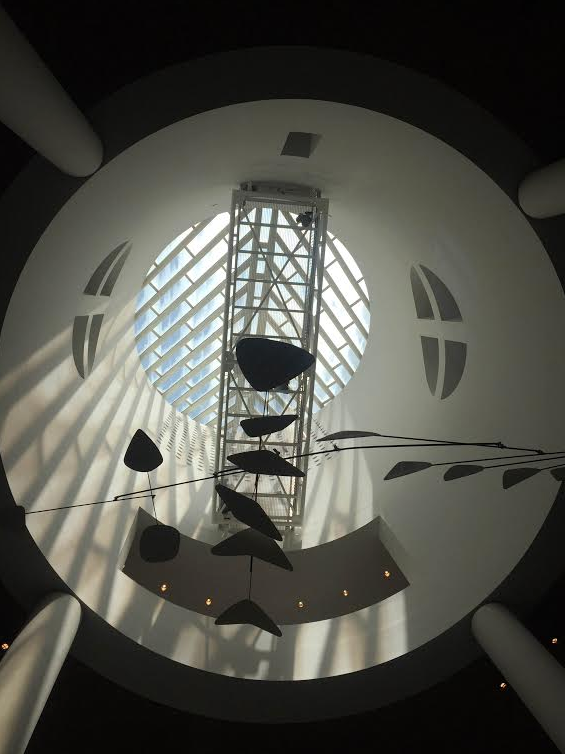
The Hall SF: A "Super Pop-Up" in Mid-Market.
We toured a formerly vacant 4,000 square foot billiards spot, the Hall SF is a bustling food and drink venue in the Mid Market neighborhood featuring seven different culinary venues under the same roof. At first glance the project seems to be a home run food hall concept but here's the catch: it's temporary. This "super pop-up" project is the brainchild of Developer Tidewater Capital's effort to solve a problem vexing San Francisco city officials trying to redevelop blocks of boarded-up, dirty buildings. We heard from Tidewater Capital Partner Craig Young about this great project.
Closing Reception @ NEWBLK with Straight Up Technologies.
Our closing reception took place at NEWBLK, a great space that blends gallery with retail and studio collective to create context to stimulate and to engage. There, we had a lively presentation from Straight Up technologies who provides customized computer networking solutions and services for industry leaders in the technology, sports and entertainment sectors.
Urban Exploration: San Francisco - Day 1
The Downtown Alliance can learn from the successes of other neighborhoods and downtowns throughout the country. The Urban Exploration program brings public and private sector leaders together to learn about the best practices of other cities. This is the third in a series of annual trips sponsored by the Downtown Alliance to build relationships and learn from the success of other communities.
The Urban Exploration program is a working trip focused on building relationships and inspiring innovation in downtown Salt Lake City. We are currently working to strategically select projects in the bay area that correlate to emerging initiatives and issues in downtown Salt Lake City. This year's urban exploration participants will learn about downtown San Francisco's startup scene and culture of entrepreneurship, food based economy, redevelopment projects and arts and cultural initiatives.
This is the third in a series of annual trips sponsored by the Downtown Alliance to build relationships and learn from the success of other communities: we visited New York in 2014 and Chicago in 2015.
Public Investment at the Neighborhood Level
We started the day off with a breakfast panel that focused on public investment at the neighborhood level. We were joined by Juan Carlos Cancino (Program Manager of Office and Economic and Workforce Development), Jorge Rivas ( Project Manager, Invest In Neighborhoods) and Marsha Murrington (Director of Economic Development, LISC) to demonstrate how they’ve harnessed new public and private investment across targeted neighborhoods in San Francisco. This forum provided our participants with critical insight on how these neighborhood transformations have occurred.
One standout example the panel pointed to was the important role law enforcement has played in these neighborhoods, and emphasized how securing funding , as well as specially trained officers has helped to secure these previously troubled pockets of the city.
Our conversation also had other applicable moments to Salt Lake, such as the need for affordable housing and long-term affordability, the role of community partners such as the Boys and Girls Club and advocating for small businesses.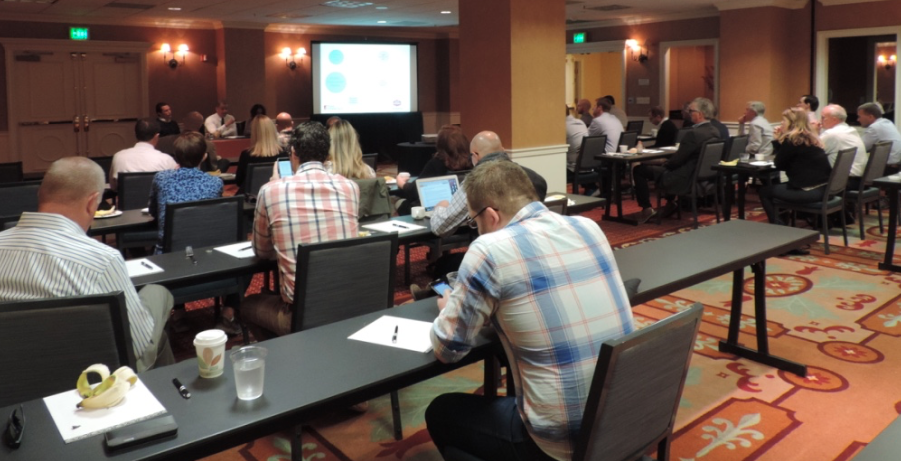
Ferry Building Redevelopment Tour:
After the breakfast panel, our group departed for the iconic Ferry Building to learn about how the city turned this area from a freeway and industrial coastline to a revitalized cultural and epicurean destination. The tour began at the Ferry Building Marketplace that featured a certified farmers market of local farmers, artisan producers and independently owned and operated food businesses. The building also features 175,000 square feet of Class A office space that many innovative companies utilize, which in turn underwrites the cost for food producers to rent space in the building. The tour was lead by CUESA’s (Center for Urban Education about Sustainable Agriculture) Executive Director, Marcy Coburn.
As we begin thinking about a year-round Public Market in the Rio Grande neighborhood, learning how San Francisco built a market, worked with food producers and drove foot traffic was key.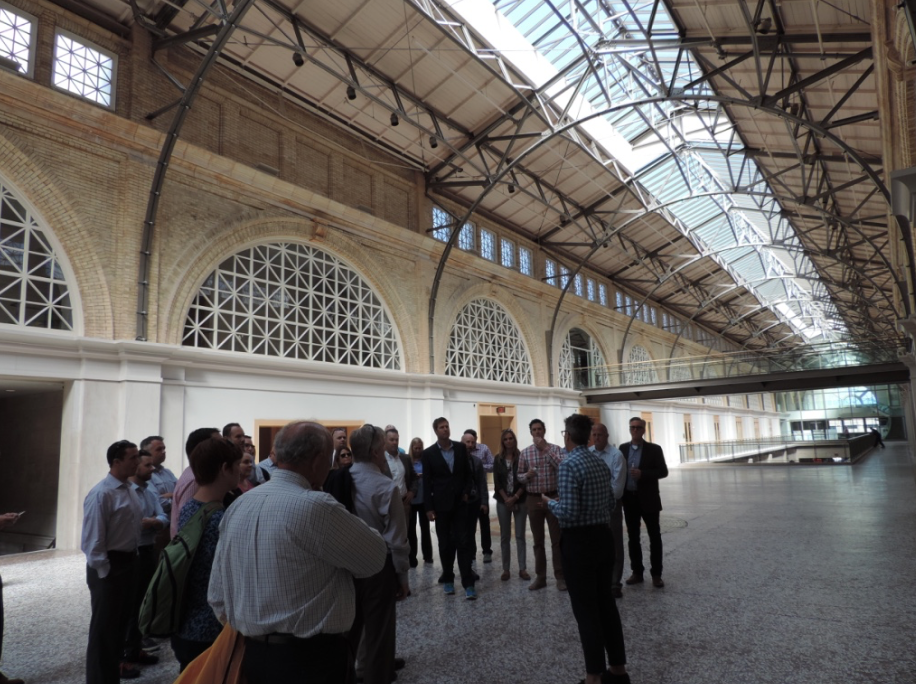
Pavement to Parks - Redefining Public Space:
One group explored the “Pavement to Parks” program that seeks to utilize the streets and public right-of-ways in San Francisco that make up about 25% of the city’s land area; more space than all the public parks combined. The Pavement to Parks program uses projects like parklets to quickly and inexpensively convert these otherwise underutilized spaces into welcoming pedestrian spaces. Many local coffee shops and small retailers sponsor a parklet, which is open to all members of the public, as well their customers to use.
The Downtown Garden Stroll in Salt Lake is similar in many ways, however, Salt Lake has much wider sidewalks, making for an ideal home for these small parks, without losing any on-street parking. The goal of these parks is to encourage public use of outdoor space.
Urban Placeholders in Hayes Valley: Temporary Retail and Activation
Hayes Valley is a San Francisco neighborhood that is at the forefront of the city’s residential development boom. Once covered by freeways, the area has come to prominence in the wake of the 1989 earthquake through collaboration between the City and the neighborhood. While the Hayes Valley neighborhood is a hot residential development area, it is also home to a temporary project: Proxy.
A placeholder for a more permanent building, Proxy is a temporary two-block construct that imagines a vibrant focal point for commerce and community. The project was conceived in relation to the realization that, due to the economic downturn, several City owned development sites would be left undeveloped for several years. Originally envisioned with a lifespan of two to three years, Proxy is now a temporary retail, restaurant, art gallery, garden and community gathering space that adds richness and diversity to the Hayes Valley. Our tour was led by Douglas Burnham, Principal and Founder of Envelop Architecture and Design and the mastermind behind the Proxy project.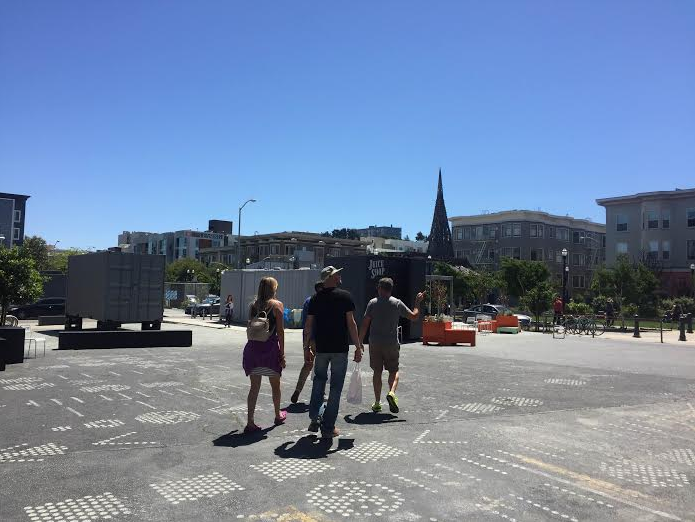
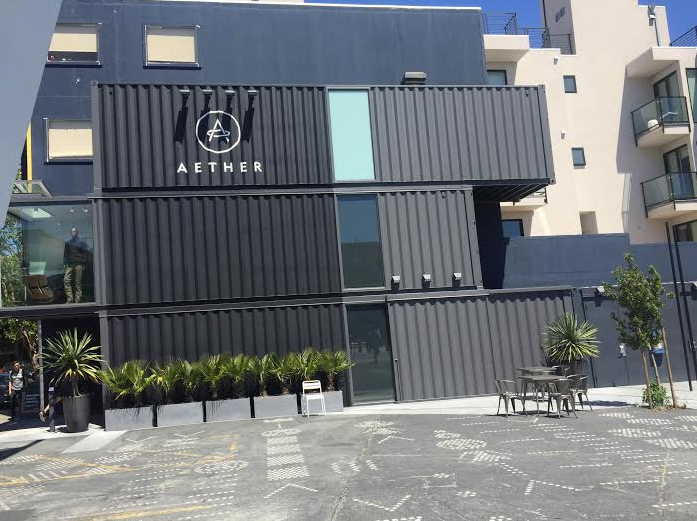
Google Fiber Reception @ Trou Normand
It's no secret that Google Fiber is coming to SLC. To learn more about the rollout, we dined with the Google Fiber team and heard from Michael Slinger who is the Director of Business Operations. He spoke on the future of Fiber, competition in the marketplace and the digital divide that they seek to close.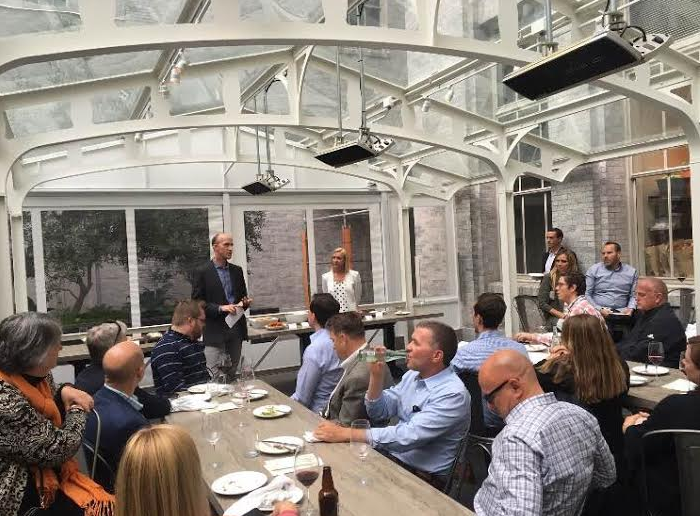
Downtown Farmers Market turns 25
July of 1992, the Downtown Alliance held the first farmers market in Pioneer Park (350 S. 300 West.) with four vendors selling produce to a meager crowd of Market staff, police officers and residents eager to welcome a market to Salt Lake City. This June, the Downtown Farmers Market celebrates its 25th season boasting more than 300 vendors and 10,000 weekly visitors. A summer tradition and nationally-regarded event, the Downtown Farmers Market is an integral part of this developing food district. The west side of Downtown SLC is a delight to the palates of those in search of fresh and local.
When the Downtown Alliance of Salt Lake City was formed, one of the first projects tasked to the new organization was to introduce programming in Pioneer Park that would encourage positive activity in this area notorious for criminal events and drug use. At this time, the downtown area of Salt Lake City seemed to end at West Temple. A viaduct on the southwest end of the park and a historic train engine on the northeast corner created visual barriers that encouraged nefarious activities. The 10-acre greenspace and largest downtown park was wrought with infamy.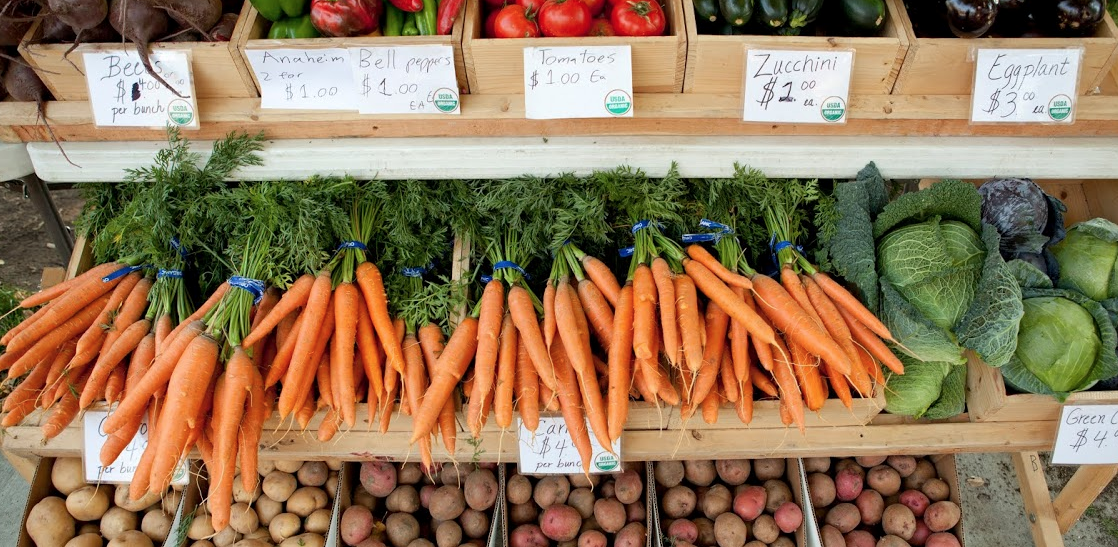
Slowly the magical elixir of urban revitalization began to take hold as residents, hotels, restaurants and retail began to emerge in the neighborhood. Through this period, the Market continued to steadily grow and expand its offerings to include artisan foods, agricultural-based crafts and live performances. In 1999, the engine was relocated to the Utah State Railroad Museum in Ogden. The viaducts, including the one abutting the park, were shortened for several downtown blocks to make way for construction of the Gateway(18 N Rio Grande St., 801-456-0000, www.shopthegateway.com). This momentum stimulated development and residential developers became early adopters building the Palladio Apartments (360 S. 200 West, 801-320-4400, www.palladioapartments.com) and converting Uffens Marketplace (336 W. 300 South.) to downtown loft condominiums in 2003. Hotel developments followed with Marriott Residence Inn (285 W. 300 South, 801-355-3300, www.marriott.com) and later Homewood Suites (423 W. 300 South, 801-363-6700, www.homewood.hilton.com) operating adjacent to Pioneer Park. The Gateway opened in 2001 bringing entertainment, shopping and the 2002 Winter Olympics to the neighborhood. One of Salt Lake’s finest Italian restaurants, Cucina Toscana (282 S 300 W, toscanaslc.com), has brought adventurous diners to the neighborhood for over the past ten years.
In 2008, phase one of the Pioneer Park renovations were completed. These renovations were designed to build on the success of the Downtown Farmers Market. A promenade of decomposed granite and concrete created a circular to facilitate Market traffic on Saturdays and to be used for jogging and rollerblading during the week. The entry corners of the park were widened and seating was added. Electricity was increased to accommodate the demands of food vendors. Opening day of the Downtown Farmers Market in 2008 broke attendance records as the media embraced a new, improved Pioneer Park. Patrons that had avoided the Market due to its location were converted to regular customers, as the feeling of safety is evident with 10,000 patrons strolling the Market.
As the Downtown Farmers Market continued to expand, local food establishments also opened in the area, elevating the food culture. Tony Caputo’s Market and Deli (314 W. 300 South, 801-531-8669, www.caputosdeli.com) opened in April 1997. Finding immediate popularity for made-to-order deli sandwiches, the commuter crowd flocked to the neighborhood. Caputo’s has continually evolved and ranks among the best specialty food markets in America complete with a cheese cave, a chocolate file and an unrivaled selection of artisan foods. Caputo’s and the Downtown Farmers Market have enjoyed a symbiotic relationship. Caputo’s vends their house-made products at the Market, sponsors Market programs and educates the community about good, fair food. Furthermore, Caputo’s has supported many emerging food entrepreneurs from the Market and discovered new producers that now vend at the Market.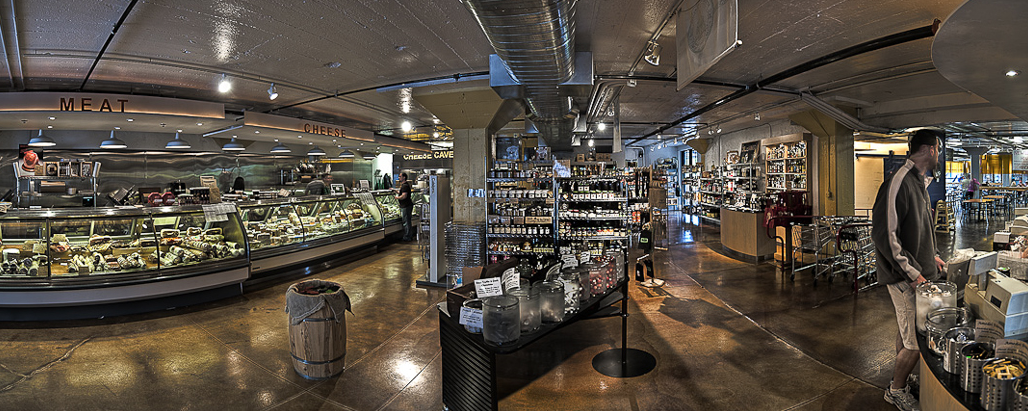
Joining Caputo’s on the north end of the park are a variety of food-focused businesses including Aquarius Fish Co. (314 W. 300 South, 801-533-5653, www.aquariusfish.com) , a family-owned seafood market opening in 2001. That same year, Carlucci’s Bakery and Café (314 W. 300 South, 801-366-4484, www.carluccisbakery.com) opened selling high-quality baked goods and pastries featuring local, quality ingredients. In 2008, Bruges Waffles and Frites (336 W. 300 South, 801-363-4444, www.brugeswaffles.com) transitioned from a vending cart at the Downtown Farmers Market to their first brick-and-mortar shop on the north end of Pioneer Park. With a loyal fan base cultivated at the Downtown Farmers Market, the business was quick to establish and now includes four Utah locations.
On the south end of Pioneer Park, a six-lane, UDOT-managed thoroughfare separates the park and the retail parcels. When Tin Angel (365 W. 400 South, 801-328-4155, www.thetinangel.com) opened in 2007 there were few thriving businesses along 400 South. Co-Owner Kestrel Liedtke recalls, “The building we were renovating was very run down and had a sketchy history as did most of the area. Our friends and family told us we were crazy for thinking of putting our time and energy into the area. They all encouraged us to focus on a different neighborhood. But the argument we kept coming back to was that we wanted to be rooted in local food. We would never have even considered our current location if the Downtown Farmers Market had not been across the street.”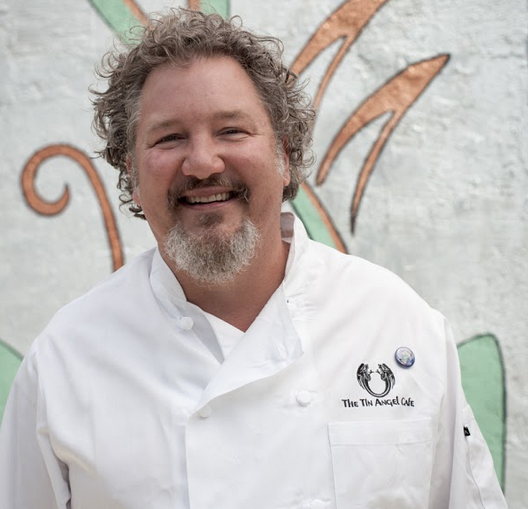
Nearly a decade later, Tin Angel is a celebrated local establishment frequently included on the list of best restaurants throughout the state. Chef Jerry is committed to supporting local farms and producers, which is evident on Tin Angel’s seasonally-inspired menu. You may also spot him at the annual Chef Showdown at the Downtown Farmers Market where he has taken home four awards. Market visits on Saturday mornings are perfectly end capped with house-made Bloody Marys and leisurely brunches on Tin Angel’s patio.
In more recent years, the Pioneer Park neighborhood has continued to see new food businesses in the area including the renovation of an historic building that once housed Salt Lake’s first creamery and now contains The Rose Establishment (235 S. 400 West, 801-990-6270, www.theroseestb.com) (2010), a local cafe serving coffee, tea, baked goods and lunch; and Pallet (237 S. 400 West, 801-935-4431, www.eatpallet.com) (2013), a New American Bistro featuring craft cocktails, seasonal menus and a fetching modern design. For those seeking fresh and innovative dishes, the west side of Downtown SLC does not disappoint.
As the Downtown Farmers Market and the myriad of local food businesses near Pioneer Park continue to prosper, the neighborhood continues to face a variety of urban problems. For most of the week, Pioneer Park is underutilized and criminal activity is commonplace. The social service areas a couple blocks west of the park are overrun with both homeless in need of services and criminals hiding among the populace.
Despite the challenges, the future is promising as more residents move into the area with Garbett Homes’ Downtown 360 (360 S. 400 West) project slated to open in August 2016 with 151 units. The Redevelopment Agency’s Station Center to the west attracts mixed-use development and a year-round public market. To the north, The Gateway is under new ownership with pointed goals to create a thriving entertainment district. Perhaps most importantly, Utah’s community leaders are working together to find real solutions for Utah’s homeless population and the shelters that work in the neighborhood.
While those changes take shape, the food community organically creates a neighborhood brand around fresh and local food. Summed up best by Kestrel Liedtke of Tin Angel, “It has not been an easy ride setting up shop in this neighborhood. We feel that the name of Pioneer Park suits us as we are pioneers working the plow alongside Caputo's, Carlucci's, the Downtown Farmers Market and all the people who put their energy into carving out a place for local food. While it may not have been easy, we are grateful that the Farmers Market has been there laying the paving stones in the path or we could not have walked this trail. And honestly, we are happy that we did!”
Important dates:
-25th Anniversary Celebration
June 2 at Squatters Pub Brewery
-Downtown Farmers Market
Downtown Art and Craft Market
June 11 – October 22 at Pioneer Park
8 am to 2 pm
-Harvest Market at Gallivan Center
August 2 – October 18
4 pm to dusk
Details at slcfarmersmarket.org
GREENbike: Signs of an Economy on a Roll
Utah was named the Beehive state for its industrious workers, that idea still holds true today in downtown Salt Lake City. Tech companies are flocking, startups and coworking spaces pump out new businesses and a young, educated workforce is taking advantage of a record low unemployment rate. There is no denying the buzz of activity taking place. On any given night, people swarm the sidewalks bouncing between restaurants, art galleries and theatres. In addition to a growing nightlife scene, other signs of downtown’s golden age can be seen in new apartments, condos and increasing methods to reach all of these businesses.
With all these people, you might wonder, “Where is the traffic jam?” In addition to an expansive public transit system and a walkable downtown, a bike-friendly city has helped ease auto traffic in a time with a flurry of economic activity. The wildly successful and ever expanding GREENbike program helps you get from point A to B easily and conveniently. Best of all, you’re helping to clean the air while having fun AND supporting local businesses.
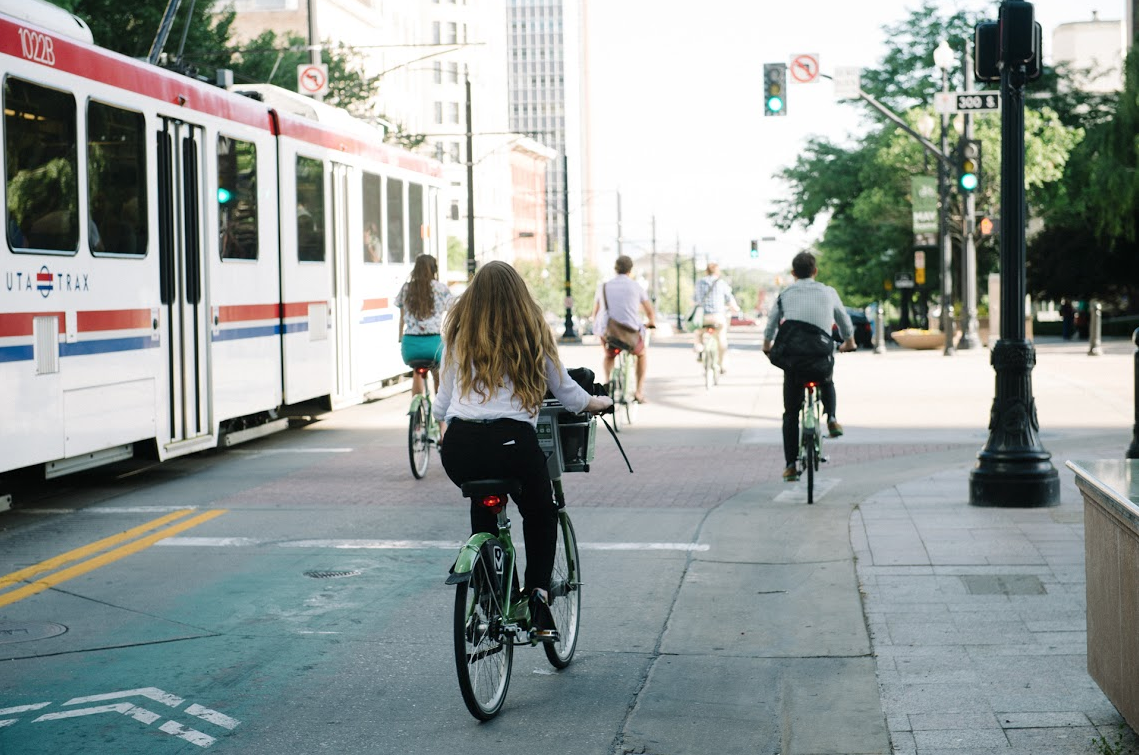
Now heading into their fourth year, GREENbike, led by Ben Bolte and the rest of the GREENbike crew are equipped with an arsenal of 24 stations, nearly 200 bikes and a hunger for expansion. Bolte quantifies GREENbike’s role in the flourishing downtown ecosystem in more than just dollars and cents. “In addition to the commuting benefits, GREENbike promotes infill development, air quality and can help with sales for downtown businesses”. In fact, in a recent survey the number one reason people used GREENbike was for food and drink, closely followed by commuting and social. The numbers don’t lie, nor do the smiles of all the people riding: well over 100,000 last year.
GREENbike is a result of prosperity, as well as driving force for spurring the local economy. The secret to their rapid growth and success? Density. Each station is selected by looking at a number of variables such as proximity to public transit, surrounding nightlife, grocery stores etc. All without veering too far from the closest station. It’s a recipe that has made GREENbike an elite and high performing bike share program, putting them with the likes of larger cities like Boston and Washington D.C. Density of stations also makes people more inclined to live near a station. 75 percent of respondents of the aforementioned survey were more likely to choose an apartment or condo downtown with a station in front or nearby. Making it fast and fun to go to Harmons Grocery Store to restock your cabinets or down to the Beerhive to grab a drink with friends.
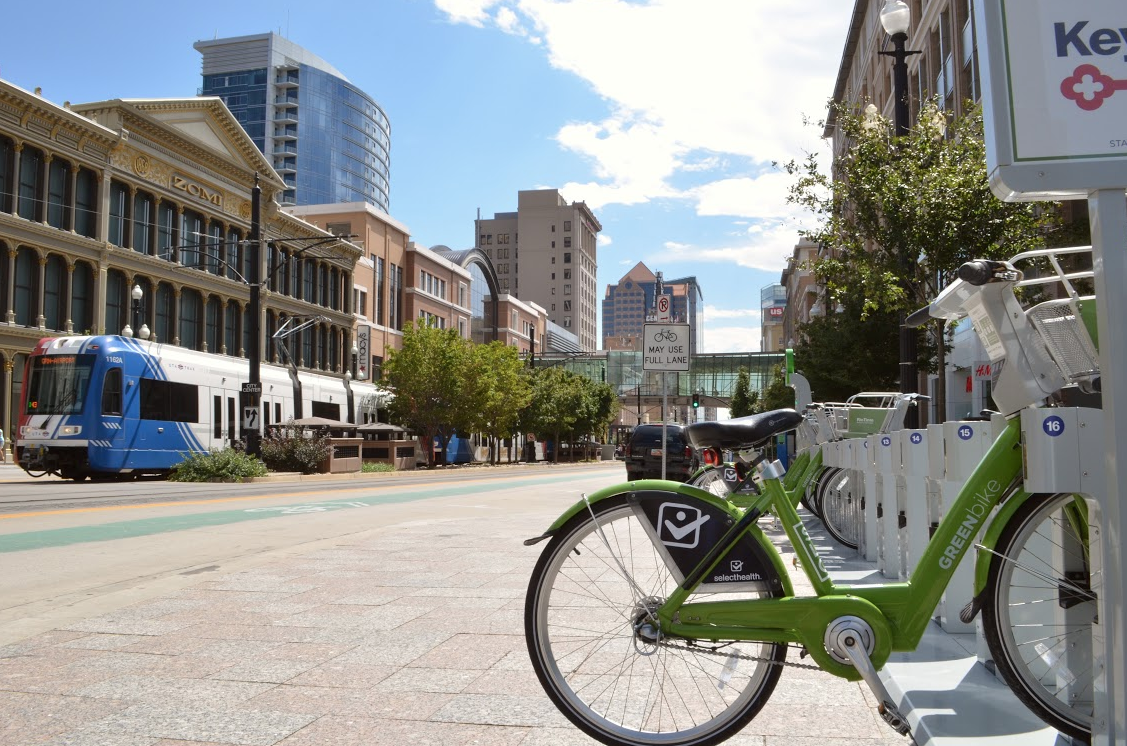
Frequent rider and UCAIR board member, Ryan Evans has been a GREENbike advocate and annual passholder since GREENbike’s inception. Aside from the obvious clean air benefits of riding a bike that supports the mission of the statewide clean air partnership, he says GREENbike is the most efficient way to get around downtown. “It’s just as fast, if not faster than driving if you consider finding a parking spot, parking and then walking to your destination. And the best part about it is that it’s a lot of fun.” From an economic standpoint, Evans thinks that more companies should get on board with GREENbike’s Office Pass Program where they can buy discounted passes for employees. “The cost of a GREENbike pass would be a lot cheaper than reimbursing employees for parking downtown. You’ll be improving your company’s bottom line while improving workplace morale.” Ryan practices what he preaches and finished in the top-ten of annual passholder rides three out of the past four years.
It’s not just bike enthusiasts that love the program. Casual bikers like families and groups of friends frequently use the bike share program, especially on the weekends. Downtown businesses are reaping the benefits, such as one of the first station sponsors, Squatters Pub Brewery who have seen firsthand the effects GREENbike can have on business. “It’s amazing how much activity we see at our station from both out of town visitors and locals alike” says Judy Cullen, marketing director for Squatters and Wasatch Brewery. “We get nothing but positive feedback from our guests about the ease, convenience and just plain fun of riding a GREENbike around the city.” For the businesses on the fence about having or sponsoring a station nearby, Cullen encourages them to take the plunge. “They will be amazed by the energy and customers that the stations bring.”
With expansion in mind, the sky that they’re keeping clean is the limit for GREENbike. This means more connections to and from downtown coupled with public transit, more apartments and condos with stations in front, easy bar and restaurant hopping and most importantly an efficient and fun way to get around that won’t break the bank. More locations will be added downtown, and eventually throughout the Salt Lake Valley, and businesses are sure to feel a boost in atmosphere and sales. It’s easy to see the trend in GREENbike’s ridership data, every time they add new stations - rides increase, and that’s good news for anyone that owns a business or lives near one. From the hardcore 365 day bikers to the suburban families enjoying a weekend downtown, GREENbike will continue to mix business and pleasure for years to come.
Eight Slices
Slicing a pie into eight slices is as an old a tradition as the delicacy itself. Pizza purists (myself included) consider “real” pizza best when simple ingredients are used. Following the adage of “less is more” and avoiding “exotic” ingredients, this staple still allows for an incredible variety of options and flavors. Here are eight of our favorite downtown slices, making a “pie” of SLC’s greatest hits.
Settebello - Margherita
One bite and you’ll be magically transported to the Italian countryside. An imported brick oven and ingredients provides perfect blackened char spots on the crust: “a tell-tale sign of Pizza Napoletana that has been cooked in a blistering hot, wood burning oven. Each pizza is an individual work of art.” The Margherita is the quintessential Italian pizza, featuring fresh buffalo mozzarella. (260 S 200 West, 801-322-3556, settebello.net)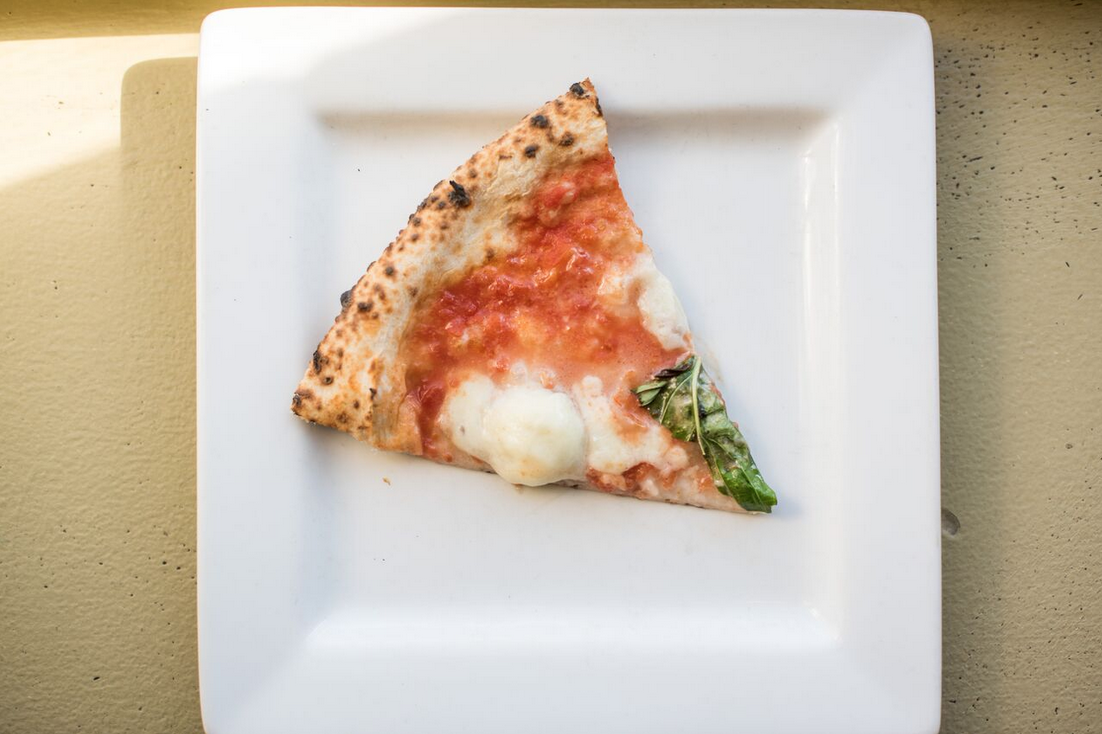
Stoneground - Bianca
Featuring house-made ricotta, mascarpone and fresh mozzarella this pie is not for the lactose (or gluten) intolerant. Creme fraiche and oregano round out the simple ingredients, which pair so well. Cooked in a dedicated pizza-oven, this thin-crust pie is charred to a perfect crust in less than five minutes. (249 E 400 South, 801-364-1368, www.stonegroundslc.com)
Canellas - Frank Lloyd Wright
“Simplicity is the ultimate sophistication.” We agree with this quote above the pizza section on the menu. These famous words, while attributed to Leonardo da Vinci, shines through in this pie named after Wright, the architect. Five ingredients (marinara, mushrooms, arugula, black truffle oil and mozzarella) combine for an unforgettable flavor.(204 E 500 South, 801-355-8518, www.cannellasrestaurant.com)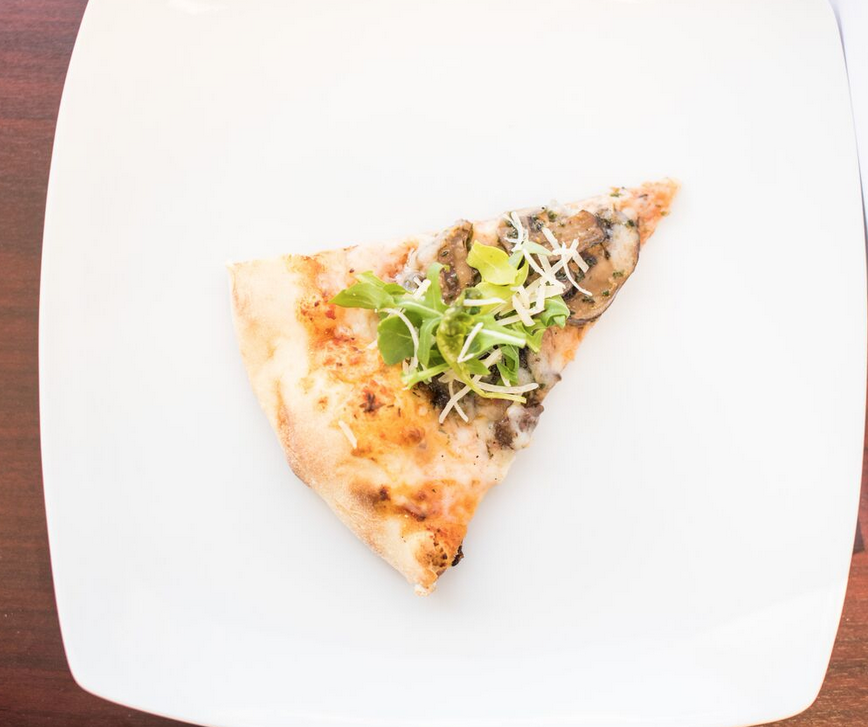
Eva - Brunch Flatbread
When is a pizza not a pizza? When it’s a flatbread. Proving the French are equally adept as their Italian and American counterparts, this mix of gruyere cheese, fresh arugula and bechamel with French ham easily passes the sniff test as either a pizza or a flatbread. This combo, available at Eva’s, as well as the their Boulangerie bakery, passes the taste test, too. (317 S Main Street, 801-359-8447, evaslc.com)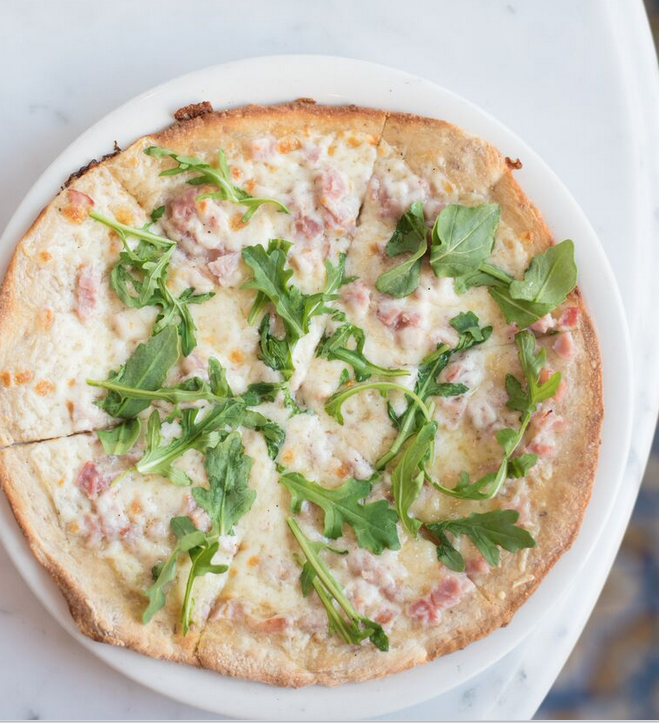
From Scratch - Margherita
An in-house flour mill and locally sourced ingredients give From Scratch the nod from foodies and locavores alike. These personal-sized pies define elegance and the power of high-quality ingredients. Astoundingly the Margherita at From Scratch has a completely different texture and flavor profile than the one from Setebello. A classic example of not better or worse, just different. Variety is truly the spice of life, or in this case a pizza slice! (62 E Gallivan Ave. 801-961-9000 www.fromscratchslc.com)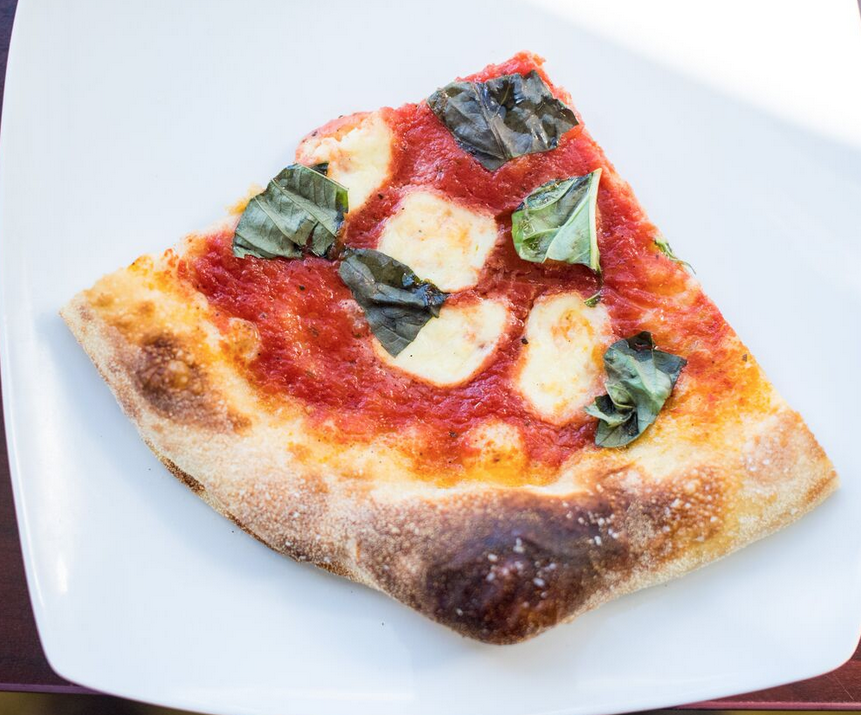
Este - Pepperoni
Downtown SLC is 2,177 miles from Brooklyn. At Este though, you would never know we were more than a stone’s throw from the Williamsburg Bridge. Whether you order by the slice or pie, any craving for a fix of NYC pizza will be satiated here. Don’t bother ordering pineapple or requesting ranch...you’ll be treated to a Bronx Cheer. Opt for the classic stand-by pepperoni slice instead. (156 E 200 South, 801-363-2366, www.estepizzaco.com)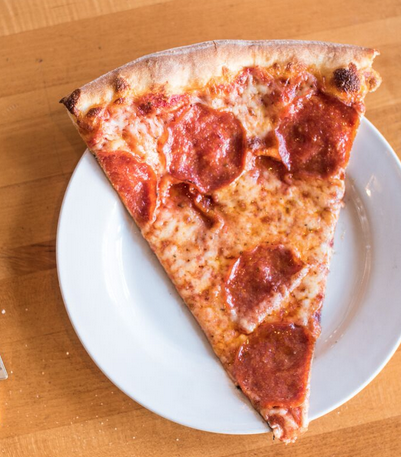
Pie Hole - Roasted Red Pepper & Basil
The personality of the staff and space shines through on a catalog of rotating specialty slices. A standby on the menu is the Roasted Red Pepper and Basil, and for good reason. Slices from this State Street joint taste best when consumed off a paper plate, fresh out of the oven. Workers rolling dough and tossing pies in the sidewalk window and funky ambiance only makes the pizza taste better. Open late for eats past midnight after a night out on the town. (344 S State Street, 801-359-4653, pieholeutah.com)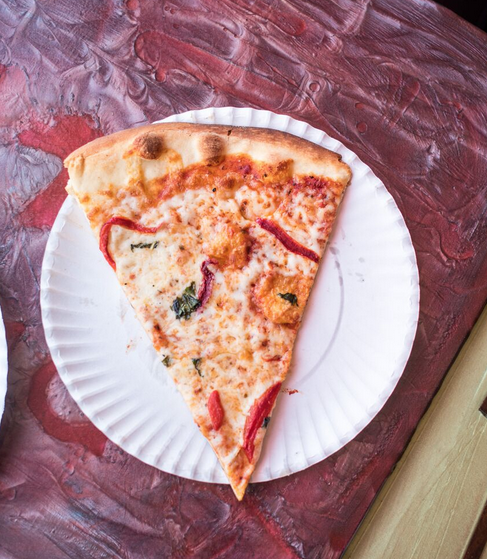
Pizza Studio
Let your personality shine through on custom made-to-order pies, including your choice in crusts: Whole Grain & Flax Seed, Rosemary Herb, Firecracker, as well as Gluten Free, and of course, Traditional. For those who can’t decide, they also have some house pies. Pictured is the Garden Blend, featuring mozzarella, roma tomato, red onion, mushroom, artichoke hearts, kalamata olives and zucchini. (51 S Main Street, 801-359-4512, www.pizzastudio.com)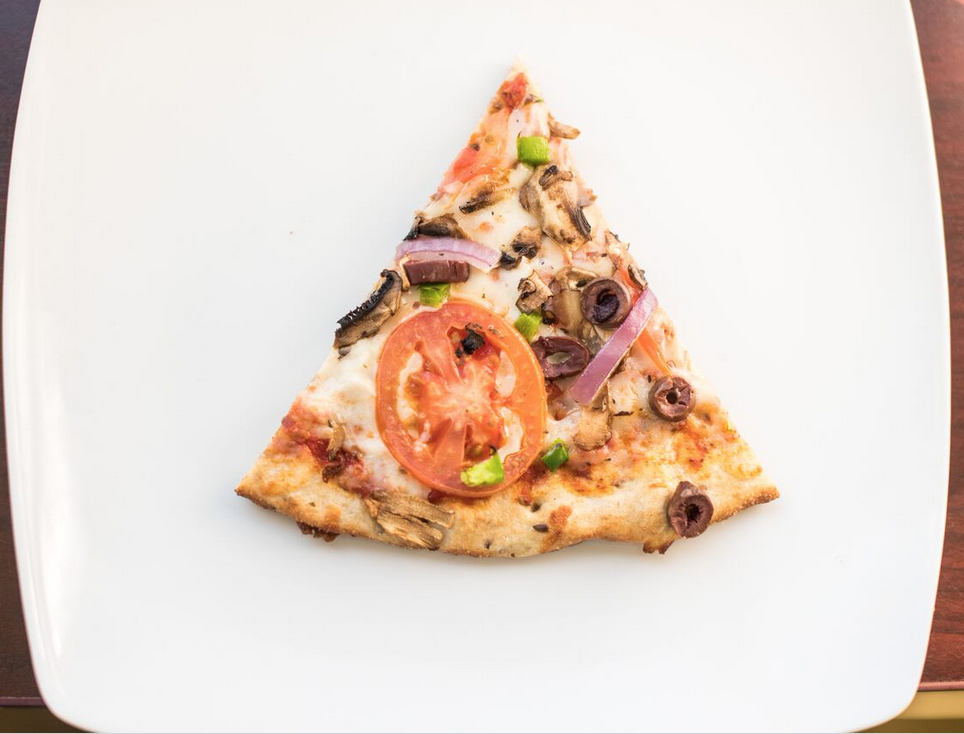
Service with a Smile
Although downtown Salt Lake boasts a plethora of dining establishments that draw locals and visitors alike for their culinary creations, sometimes it’s the people who help serve you—those rare gems who choose to make the business their career—and excel at creating memorable experiences for guests that bring you back time and again. A great server can make a mediocre meal memorable and bad service can ruin an otherwise perfect dining experience.
Behind the Scenes at the LaSalle Restaurant Group
Meet Sarah Fults, the new operations manager for the LaSalle Restaurant Group—which owns and runs Caffe Niche, Oasis Cafe, Faustina, Kyoto and Current. Fults explains of her role, “I could talk all day about budgets, cost centers, labor and profit and loss statements, but my main purpose and goals are to support all of my outstanding hourly employees, general managers, chefs and assistant managers so that each restaurant runs successfully and every guest leaves with a smile on their face.”
Not many understand the passion, drive or insight it takes to make sure patrons have a phenomenal and seamless experience Fults explains. “I create an atmosphere of structure and systems to maintain a balance of happy guests, happy staff and happy business.”
Keeping people happy is oftentimes a thankless task filled with emotion and misunderstandings. So it’s no surprise that Fults feels the best part of her job is when someone comes in and says, “‘that was the best service I have ever had’ or ‘I will be back to eat this every week and tell my friends’. It really makes my heart happy and gives me a feeling of purpose.”
In her role with the LaSalle Group, she visits multiple restaurants on a daily basis and fills in for any position that may need help on any given day. “I assist with making sure we have effective scheduling to ensure labor costs, I work with the chefs on consistency and menu creation, I give the managers and hourly staff the tools to sell more to make the restaurant successful as well as the hourly staff making a better income.”
It’s a hefty task but one that Fults embraces fully. “I get to learn something new every day,” she says. “Not only do we get the chance to meet and learn from people, we get the chance to educate them on amazing cuisine and cocktails.”
Fults’ dedication to listening to her customers are what has made her successful in her chosen profession she feels. “I listen to our guests. I ask them questions about what they would like to see. Providing great service and food for people is what I love.”
Ahead of the Curve
Much has been made of the fact that Salt Lake City’s Transportation Director, Robin Hutcheson, is a woman. Examined through the lens of her profession, where almost everyone—from bus drivers and airplane mechanics to bicycle shop owners and civil engineers—is male, the position Hutcheson reached and her efforts to elevate her female colleagues (she founded the Utah Women’s Transportation Seminar chapter in 2007) do in indeed make her gender newsworthy. But she bristles at being labeled an advocate. “I think of myself more of a mentor than someone fighting for change,” she says. “I believe in a level playing field where anyone who does a good job can get ahead. My advocacy for women in transportation doesn’t define me.”
What is defining her—and what will likely be one of the distinguishing factors of her boss Mayor Ralph Becker’s political legacy—is how she’s leading a transformation in the way Salt Lake City residents get around.
Since taking the helm of the city’s transportation division in January 2012, Hutcheson and her staff have enjoyed plenty of success. The team she works with is a symbiotic mix of industry veterans and enthusiastic new talent. Salt Lake City’s notoriously problematic electronic paid parking system was fixed at zero cost to taxpayers. Walking was “brought back into the conversation” Hutcheson says, with the approval of and funding for installation of 21 new pedestrian safety devices throughout the city, including 10 HAWK (High intensity Activated crossWalK) Signals, five rapid flashing crosswalk beacons and three full traffic lights. And, of course, there’s the Hive Co-op Pass, a personal “labor of love” for Hutcheson that, thanks to subsidies from both Utah Transit Authority [UTA] and City Council, allows Salt Lake City residents unlimited access to city buses, TRAX, and the S-line streetcar for just $42 a month. These accomplishments, while significant, are just a taste of what Hutcheson and her staff are working on for the future.
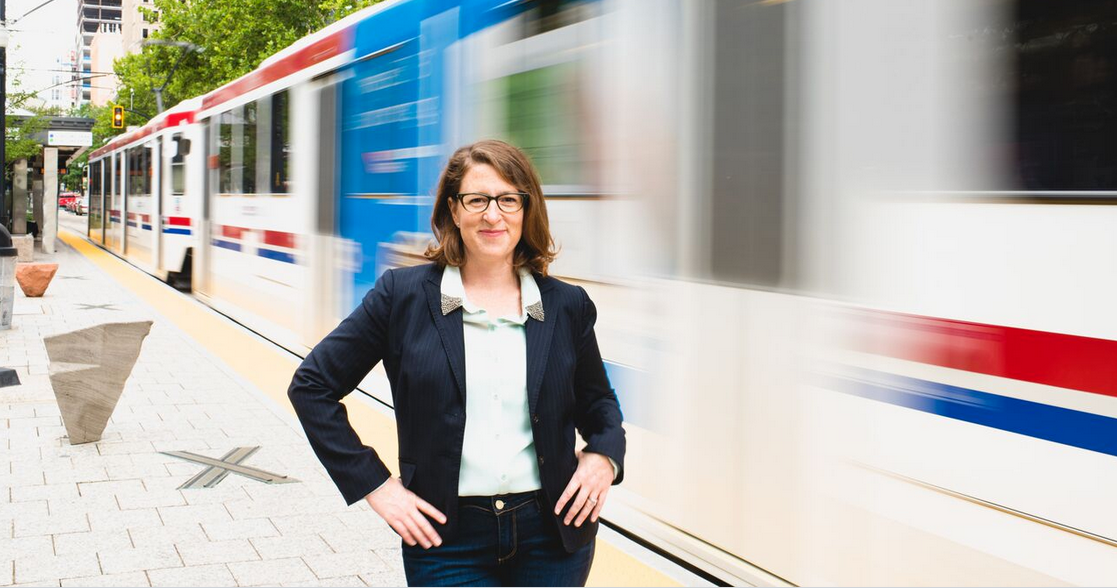
Here’s the forecast: Many of the projected 40,000 new residents and 20,000 new employees scheduled to arrive downtown by 2040 will spur residential and commercial development in what are now underdeveloped areas, allowing for shorter, more walkable and bikeable distances between destinations. Many suburban residents will continue to use their cars to travel into the city, but overall automobile usage will steadily decline, increasing demand for public transit to both get downtown and get around while here.
To meet this increasing and evolving demand, transportation in Salt Lake City will, in a nutshell, be about “more of everything,” Hutcheson says. A few specifics include the Downtown Streetcar, a proposed line running west from the University of Utah to 100 or 200 South, 400 West and then jogging south to 900 South. Bus routes and frequency will increase, including more express routes. Salt Lake City’s famously wide streets will be repurposed to provide safer and friendlier pedestrian navigation. “No one’s advocating getting rid of the car,” Hutcheson says. “But our demographic is changing. The Millennials and active boomers converging here don’t want their cars to be their primary form of transportation.”
Speaking of cars, for those who like to drive, take note: autonomous cars are coming sooner than you think. According to Hutcheson, driverless vehicles’ impact on public transit could look like this: riders would use their Smartphone to order a pick up through an Internet-based service similar to Uber or Lyft. But rather than arriving with a driver, an automated vehicle, constantly circulating on a set path, would stop to pick up and drop off passengers on demand. Automation could, with the human factor removed, be safer and potentially allow more cars on the road. “How automation will affect cities is still uncertain but we know it will and we’re doing our best as an industry to prepare,” Hutcheson says.
Another major way Hutcheson and her staff are preparing for the future is by crafting Salt Lake City’s first ever Transit Master Plan, scheduled for roll out in December. This plan is a citywide look at how buses and trains can be a better option for residents and visitors alike. It will guide decisions and investment both immediately and over the long term, and identify specific corridors for enhancement and restructuring. Plan collaborators include UTA, the University of Utah, the Salt Lake School District, and, perhaps most importantly, residents at large. Earlier this year transportation division staff hit the road in the Downtown Alliance’s Jingle Bus on a mobile tour of city events including the Downtown Farmer’s Market, the Twilight Concert Series and the Urban Flea Market gathering feedback from city residents about what they’d like public transit in Salt Lake City to look like. “We have never asked our residents what would make it easier for them to ride transit,” she says. “What is proposed in this plan will be directly related to what residents told us works and what doesn’t.”
Thanks to Brigham Young’s 132-feet-wide streets—wide enough so that a wagon team could turn around without “resorting to profanity”—downtown Salt Lake City’s streetscape offers an ample canvas for Hutcheson and her staff to re-think all transportation modes to better serve the people of Salt Lake City well into the future. She acknowledges that there will be some natural resistance to and conflict between the increased roadway users, “Change is hard,” Hutcheson says. But she also believes that the variety of options on the horizon will make our city a more vibrant, more usable, and an overall better place to live. “I couldn’t be more proud of what our city has become, particularly over the past 10 years, and transportation has been a part of that. People want choices in the ways they travel. My job is to provide people with those choices, minimize conflict between users, and do the best we can to protect this amazing place we call home, which at the end of the day, is draws people to live and stay here in the first place.”
There are many ways to think about building a city.
One involves brick and mortar buildings. With the success of Downtown Rising, Salt Lake City has reinvented itself in a dramatic transformation over the past decade. Construction cranes crowd the sky as office buildings, retail spaces, condo complexes and cultural amenities rise up to meet increased demand. These new public and private investments have reinvigorated the economy, reinforcing Salt Lake City’s entrepreneurial spirit and infusing downtown with new capital, optimism and sense of possibility.
A more profound approach is to look towards the people and businesses who make up the fabric of a city.
The soul of any city is made up of the people who love it and are committed to their city’s future. To that end, the commercial real estate industry has played a significant role in bringing dynamic business into the urban center and fostering a downtown that we are proud of today.
The commercial real estate business in Salt Lake City is a competitive, traditionally male dominated industry. However, six of downtown's top commercial real estate professionals, representing significant space in downtown are female. Each of them are quick to point out that gender has little to do with their success. “I do not see myself as a female in a male dominated workforce,” says Dana Baird, Executive Director of Cushman & Wakefield | Commerce. “I see myself as a person who has different traits and I think it’s important to set gender aside from business.”
These women, while competitors, also share common goals in impacting downtown’s rapidly transforming economy. Terese Walton with Gaddis Investments says “there’s two common goals among the six of us- making money and having a lasting positive impact on downtown.” This competition also breeds creativity, according to Lindsay Vieta of InterNet Properties. “Although we are competitors, we all are improving our city. When one of us succeeds it creates new opportunities for the others,” she says.
Another shared commonality between competing commercial real estate companies is the ability to leverage downtown’s assets when making deals. The proximity of natural beauty and recreation, complemented by vibrant work and social environments and robust transportation infrastructure, makes downtown Salt Lake City the ideal place to bring prospective tenants. According to Nadia Letey of CBRE,“mass transit options and connectivity are huge” for clients and their employees. These new downtown tenants, who have relocated either regionally or from out of state, recognize the importance of affordable, convenient transportation in attracting a strong workforce.
Cultural amenities are also an important part of the equation. “There is just so much going on downtown. Whether it’s events and festivals or new developments like the Eccles Theater, we have a great story to tell to prospective tenants,” says Jami Marsh, Vice President of JLL.
As we look towards the coming decades in a dynamic urban landscape, change has already begun. Whether it is relocating international firms to Salt Lake to continually filling new office space with a young and educated workforce, downtown’s family continues to grow. The physical and cultural changes have resulted from the vision and leadership these six professionals have spearheaded. When I think of what, or who is the face of building our city, these six are the answer.
Jami Marsh
JLL
Vice President
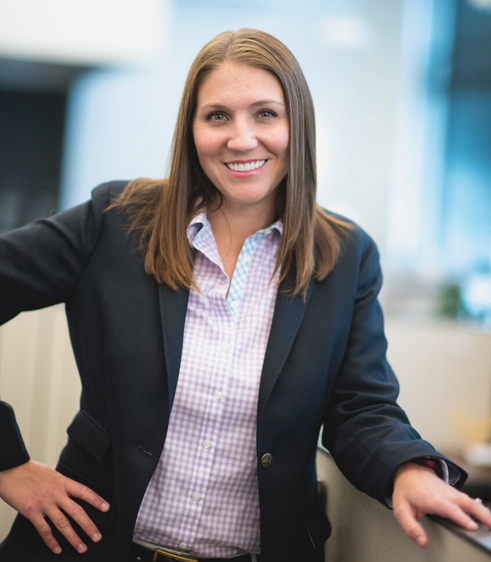
Jami Marsh provides tenant representation, landlord agency, investment analysis, cost reduction expertise and strategic planning services in the office sector for JLL. Jami is currently hailed as an emerging leader in the Salt Lake market and is focused on cultivating the business relationships she's developed over the past decade.
Heather Bogden
Coldwell Banker Commercial Advisors
Retail Specialist- Bowler Retail Team
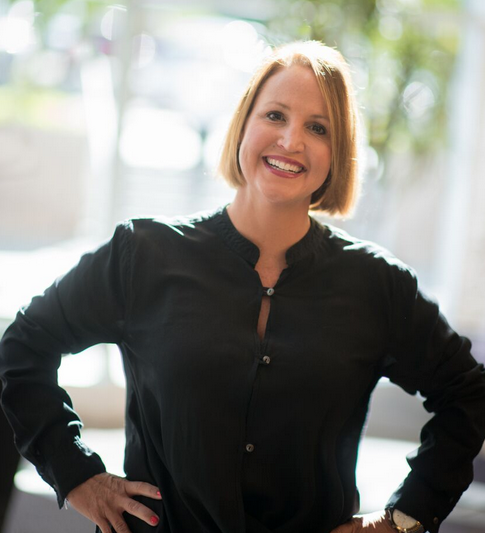
Heather is a commercial real estate agent and retail specialist at Coldwell Banker Commercial- a full service asset and brokerage company. Heather utilizes her skills and focuses specifically on retail tenant representation and leasing.
Dana Baird
Cushman & Wakefield | Commerce
Executive Director - Office Division
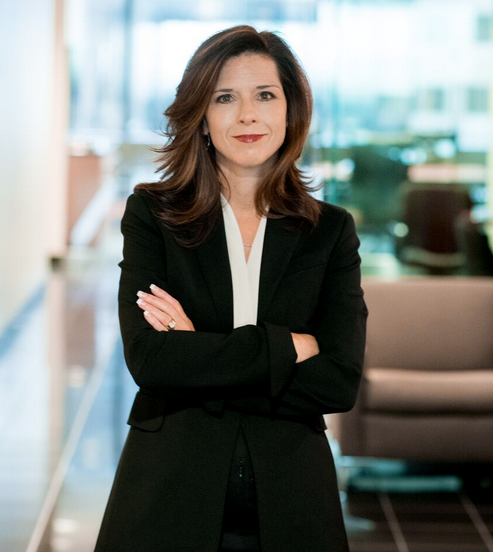
Dana brings a truly unique set of institutional commercial real estate brokerage experience and accreditations to her responsibility as Executive Director of the Cushman & Wakefield | Commerce office division. She has been active in the commercial real estate community for the past 19 years and is consistently recognized by her peers as a top producer, averaging more than $50 million and 750,000 SF of annual transaction volume.
Terese Walton
Gaddis Investments
Managing Director, Principal Broker
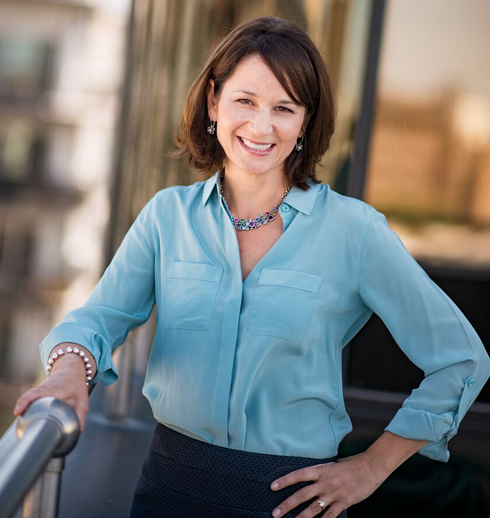
Terese Walton is the Managing Director and Principal Broker of Gaddis Investments- a company specializing in commercial real estate development, investment sales and leasing. Whether negotiating with tenant and property owners, communicating with governing entities affecting new development or assessing properties for investors looking for sustainable investments, Terese brings a superior level of confidence to her clients.
Nadia Letey
CBRE
Senior Associate- Office Division
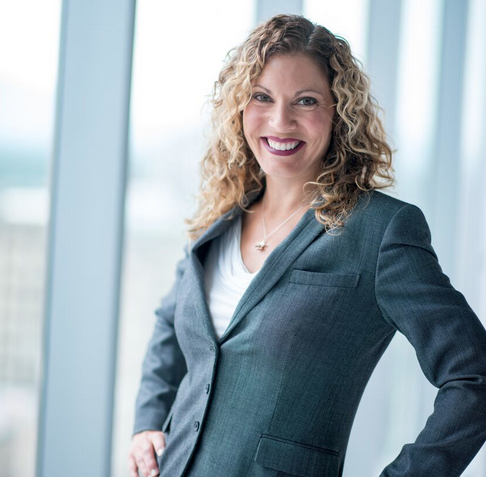
Nadia Letey is a Senior Associate with the office services division of CBRE. Nadia seeks to understand the needs of her prospective tenants and then presents them with the right opportunities. Her sales and marketing background helps her not only understand what clients want, but provide input on how to improve the marketability of their properties.
Lindsay Vieta
InterNet Properties
Agent- Commercial
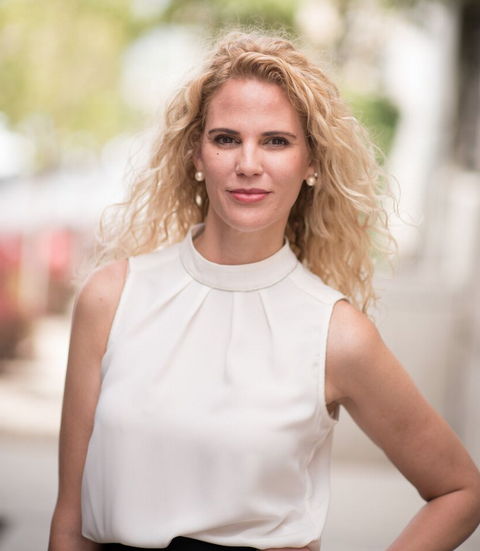
Lindsay is a Commercial Agent with Internet Properties, a full-service real estate firm offering retail, office, industrial and development services. Lindsay brings a relentless attention to detail, background in architecture and design and commitment to providing each client with personal service and care that is above and beyond the ordinary.



